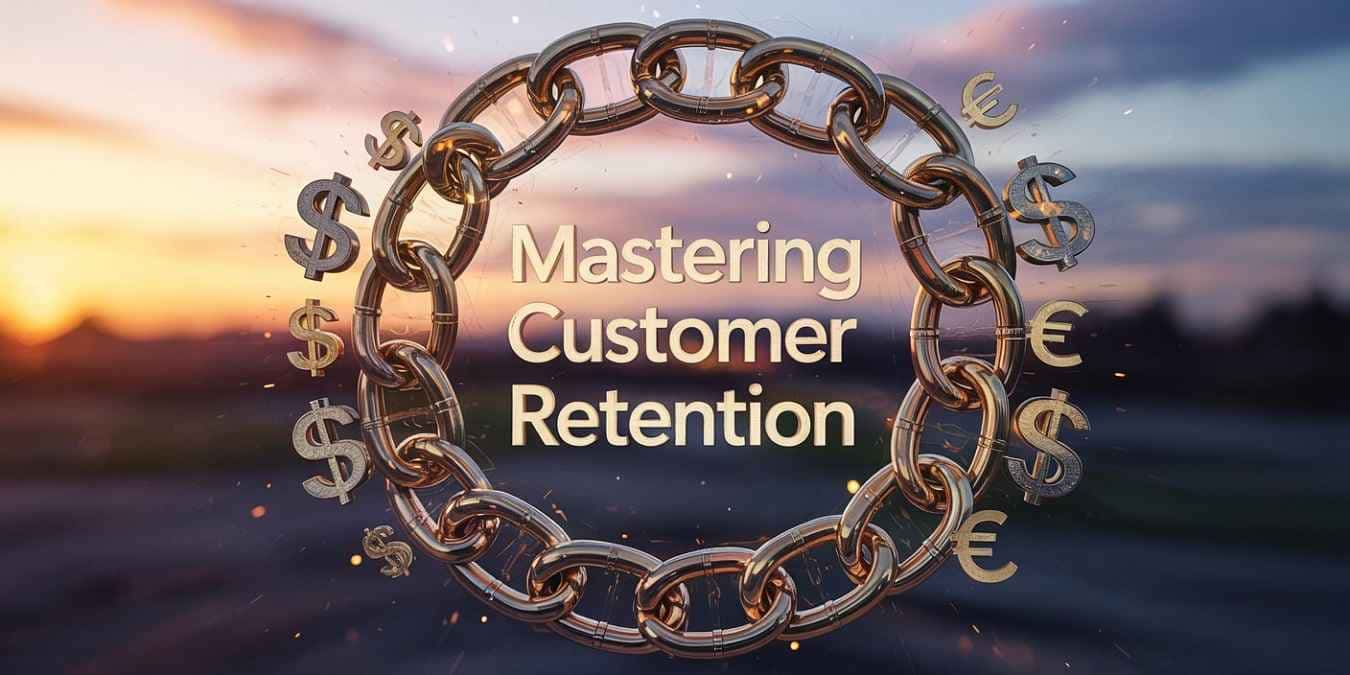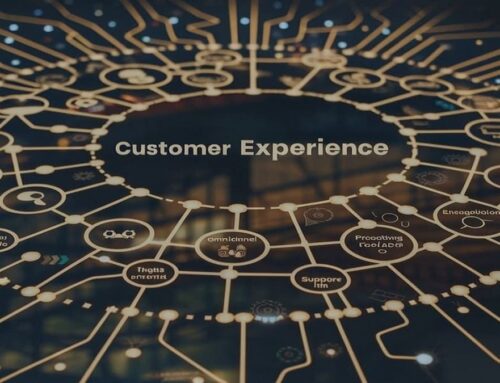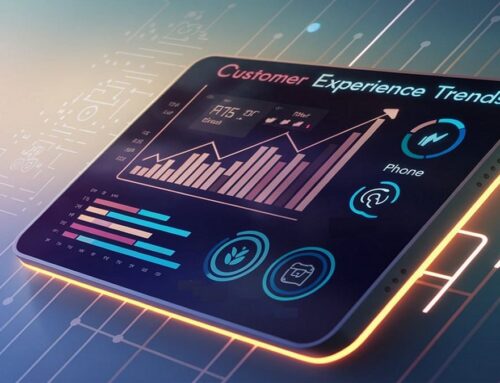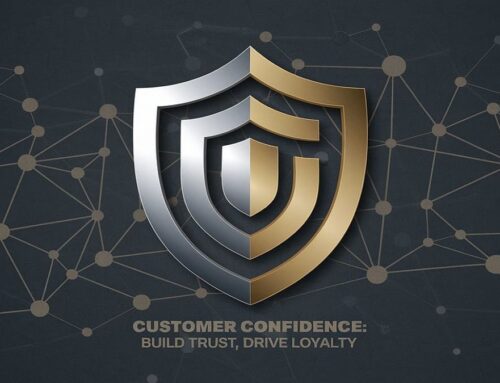
Why Mastering Customer Retention Matters
Let’s start with the basics. Why should you care about keeping customers? Acquiring new ones is expensive, five to seven times more costly than retaining existing ones, according to studies. Loyal customers spend more, refer others and provide valuable feedback. They’re your brand’s cheerleaders. Neglect them and you’re leaving money on the table.
Think about it. When was the last time you went out of your way to reward your best customers? If you’re not sure, you’re not alone. Many businesses focus on chasing new leads while forgetting the goldmine sitting in their current customer base.
Customer retention fuels long-term business growth by creating a stable revenue stream. It’s like planting a tree. The initial effort takes time, but once it’s rooted, it bears fruit year after year. Plus, happy customers spread the word, reducing your marketing costs. That’s the beauty of loyalty.
The Cost of Churn
Churn, the rate at which customers leave, can silently kill your business. Even a 5% increase in churn can slash profits by 25-95%, depending on your industry. Ouch. Every customer who walks away takes their lifetime value with them. Worse, they might share their bad experience with others.
Have you checked your churn rate lately? If not, it’s time to dig into the numbers. Understanding why customers leave is the first step to plugging the leaks. Maybe it’s poor service, lack of engagement or a competitor’s better offer. Whatever the reason, you can’t fix what you don’t measure.
Building a Retention-First Mindset
Mastering customer retention starts with a mindset shift. It’s not about one-off tactics. It’s about building a culture that puts customers at the heart of everything you do. From the CEO to the frontline staff, everyone needs to prioritize loyalty.
Here’s how to get started.
-
Know Your Customers Inside Out
You can’t retain customers you don’t understand. Dive into their needs, preferences and pain points. Use surveys, feedback forms or even a quick phone call to learn what makes them tick. Data is your friend, CRM tools like HubSpot or Salesforce can track purchase history, behavior and trends.
For example, Amazon excels at this. Their recommendation engine uses data to suggest products customers actually want. It’s no accident, they’ve mastered the art of knowing their audience.
Ask yourself: Are you using data to personalize experiences? If not, you’re missing a huge opportunity to build loyalty.
-
Deliver Exceptional Experiences
“People will forget what you said, people will forget what you did, but people will never forget how you made them feel.” – Maya Angelou
Great experiences create emotional connections. Think about the last time a business wowed you. Maybe it was a handwritten thank-you note or a quick resolution to a problem. Those moments stick.
Train your team to go above and beyond. Empower them to solve issues without jumping through hoops. Zappos, the online shoe retailer, is legendary for this. Their customer service reps are encouraged to spend hours on the phone if needed, creating unforgettable experiences.
What’s one small way you can surprise and delight your customers today?
-
Communicate Consistently (But Don’t Spam)
Stay top-of-mind without being annoying. Regular, valuable communication, like personalized emails, exclusive offers or helpful tips, keeps customers engaged. The key is relevance. A generic newsletter won’t cut it.
Take Starbucks as an example. Their rewards program sends tailored offers based on purchase history. A coffee lover gets a discount on their favorite latte, not a random pastry they’ve never bought. That’s smart retention.
Are you reaching out with purpose or just blasting emails to check a box?
-
Reward Loyalty
Everyone loves feeling appreciated. Loyalty programs, discounts or exclusive perks make customers feel valued. But don’t overcomplicate it. A simple “Thank You” can go a long way.
Sephora’s Beauty Insider program is a masterclass in this. Customers earn points for every purchase, which they can redeem for products or experiences. It’s easy to understand and feels rewarding.
What’s your version of a loyalty program? If you don’t have one, it’s time to brainstorm.
-
Act on Feedback
Customers will tell you what’s wrong if you listen. Whether it’s a one-star review or a casual comment, feedback is a gift. Use it to improve. Respond promptly, apologize sincerely and fix the issue.
A classic example is Domino’s Pizza. In the early 2000s, their pizza was widely criticized. Instead of ignoring complaints, they revamped their recipe and launched a transparent campaign admitting their mistakes. Sales soared.
When was the last time you turned negative feedback into a positive change?
The Role of Technology in Retention
Technology can supercharge your retention efforts. Tools like AI-powered chatbots, email automation and predictive analytics help you scale personalized experiences. For instance, Netflix uses algorithms to recommend shows you’ll love, keeping you hooked.
But don’t rely on tech alone. It’s a tool, not a replacement for human connection. Balance automation with genuine interactions to build trust.
Have you explored tools that could streamline your retention strategy? If not, start small, try a free trial of a CRM or email marketing platform.
Measuring Retention Success
You can’t improve what you don’t track. Key metrics like Customer Lifetime Value (CLV), repeat purchase rate and Net Promoter Score (NPS) reveal how well you’re retaining customers. Set benchmarks and monitor progress.
For example, a high NPS means customers are likely to recommend you. A low score? Time to investigate. Regularly review these metrics to spot trends and adjust your approach.
Are you measuring retention or just hoping it’s working?
Overcoming Common Retention Challenges
Retention isn’t always smooth sailing. Here are three common hurdles and how to tackle them:
-
Inconsistent Experiences
If your service varies from one interaction to the next, customers lose trust. Standardize processes and train your team to deliver consistently. Document best practices and share them widely.
-
Lack of Engagement
Customers drift when they feel ignored. Keep them engaged with regular touchpoints, think newsletters, social media or exclusive events. Make them feel like part of a community.
-
Price Sensitivity
Some customers leave for cheaper alternatives. Instead of competing on price, emphasize value. Highlight what makes you unique, whether it’s quality, service or convenience.
What’s the biggest retention challenge you’re facing right now? Identifying it is half the battle.
The Long-Term Payoff
Mastering customer retention isn’t a quick fix. It’s a long game. But the rewards are worth it. Loyal customers drive consistent revenue, amplify your brand and help you weather economic storms. They’re the foundation of long-term business growth.
Look at Apple. Their ecosystem, iPhones, MacBooks, iCloud, keeps customers coming back. Once you’re in, it’s hard to leave. That’s the power of retention done right.
“The goal as a company is to have customer service that is not just the best but legendary.” – Sam Walton
Real-World Examples of Retention Done Right
Let’s wrap up with a few more examples to inspire you:
- Patagonia: This outdoor brand builds loyalty through sustainability. Their “Worn Wear” program encourages customers to repair or trade in old gear, fostering a sense of shared values.
- Dropbox: By offering free storage for referrals, Dropbox turned users into advocates, growing their base while keeping existing customers engaged.
- Chewy: The pet retailer sends personalized gifts, like handwritten cards or pet portraits, creating emotional connections that keep customers coming back.
What can you learn from these brands? Start small, but start now.
Conclusion: Your Path to Mastering Customer Retention
Mastering customer retention is the key to unlocking long-term business growth. It’s about building relationships, delivering value and showing customers they matter. Every step you take, whether it’s personalizing an email, responding to feedback or launching a loyalty program, brings you closer to a thriving, loyal customer base.
The journey starts with a single question: What can you do today to make your customers feel valued? Don’t wait for the perfect plan. Act now. Your business’s future depends on it.
Call to Action
Ready to boost your retention game? Audit your current customer experience this week. Identify one area to improve, whether it’s communication, rewards or feedback and take action. Share your progress in the comments below or reach out for personalized tips to drive long-term business growth. Let’s make retention your superpower!
FAQs: Mastering Customer Retention: The Key to Long-Term Business Growth
Q1: What is customer retention and why is it important for my business?
A1: Customer retention refers to keeping existing customers engaged and loyal to your brand over time. It’s crucial because retaining customers is far less expensive than acquiring new ones, studies show it can cost five to seven times more to gain a new customer. Loyal customers also spend more, refer others and provide feedback that helps you improve, driving long-term business growth.
Q2: How can I measure customer retention effectively?
A2: Key metrics include Customer Lifetime Value (CLV), repeat purchase rate, churn rate and Net Promoter Score (NPS). CLV shows the total revenue a customer generates, while repeat purchase rate tracks how often they return. Churn rate measures how many customers leave and NPS gauges how likely they are to recommend you. Regularly monitor these to assess your retention success.
Q3: What are some practical ways to improve customer retention?
A3: Start by understanding your customers through data and feedback. Deliver exceptional experiences, communicate consistently with relevant content and reward loyalty with programs or perks. Act on customer feedback to fix issues and build trust. Personalization, like tailored offers or emails, also strengthens relationships.
Q4: How does customer retention contribute to long-term business growth?
A4: Retention creates a stable revenue stream, reduces marketing costs and turns customers into brand advocates who refer others. Loyal customers are less price-sensitive and more likely to buy repeatedly, providing a foundation for sustainable growth even in competitive markets.
Q5: What role does technology play in customer retention?
A5: Technology, like CRM systems, AI-powered chatbots and email automation, helps scale personalized experiences. For example, predictive analytics can suggest products customers might love, while automation ensures timely communication. However, balance tech with human interactions to maintain genuine connections.
Q6: How do I handle customers who leave for competitors?
A6: Focus on value over price. Highlight what makes your brand unique, superior service, quality or convenience. Reach out to understand why they left and address their concerns. Offering a personalized incentive or showing you’ve improved based on feedback can win them back.
Q7: Can small businesses with limited budgets master customer retention?
A7: Absolutely. Small businesses can excel by focusing on personal touches, like handwritten thank-you notes or quick responses to feedback. Free or affordable tools, like email marketing platforms or basic CRMs, can help. Building strong relationships doesn’t require a big budget, just genuine care.
Q8: How often should I communicate with customers to retain them?
A8: It depends on your industry and audience, but aim for regular, meaningful touchpoints, weekly or monthly emails, for example. Avoid spamming with irrelevant content. Use data to tailor communication, like sending offers based on past purchases, to keep customers engaged without overwhelming them.
Q9: What’s a common mistake businesses make with customer retention?
A9: Focusing too much on acquiring new customers while neglecting existing ones. This leads to high churn and missed opportunities. Another mistake is ignoring feedback or delivering inconsistent experiences, which erodes trust. Prioritize loyalty and consistency to avoid these pitfalls.
Q10: How long does it take to see results from retention strategies?
A10: Results vary, but small improvements, like higher repeat purchases, can show within months. Long-term business growth from retention builds over time as loyalty deepens. Track metrics like NPS or churn rate to gauge progress and adjust strategies as needed for lasting impact.
Q11: How can I create a loyalty program that actually works for my customers?
A11: Design a simple, rewarding program that aligns with your customers’ preferences. Offer points for purchases, referrals or reviews, redeemable for discounts, products or exclusive perks. Ensure it’s easy to understand and accessible, complicated rules frustrate users. For example, a coffee shop might offer a free drink after 10 purchases. Test and tweak based on customer feedback to keep it engaging.
Q12: What should I do if my customer retention efforts aren’t improving churn rates?
A12: Dig deeper into why customers are leaving, analyze feedback, survey lapsed customers or review service interactions. Your efforts might be misaligned with their needs. For instance, if churn stems from poor product quality, no amount of emails will help. Address root causes, test new strategies like personalized re-engagement campaigns and track metrics to measure impact.














